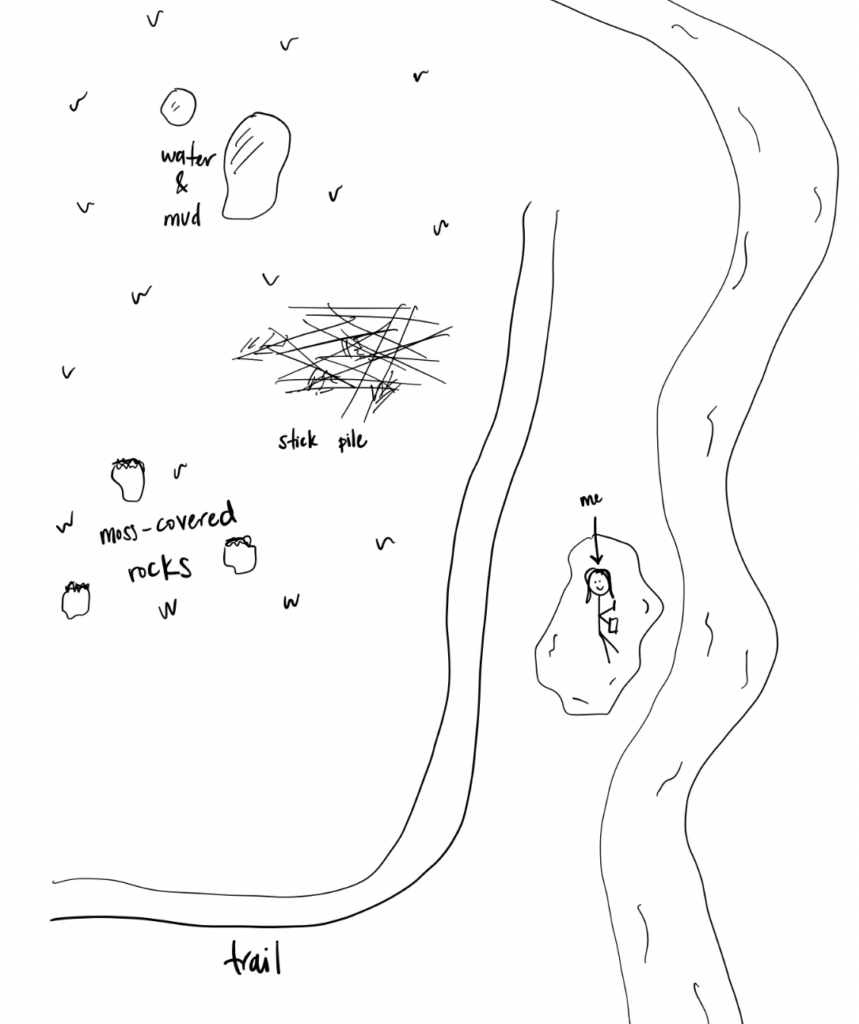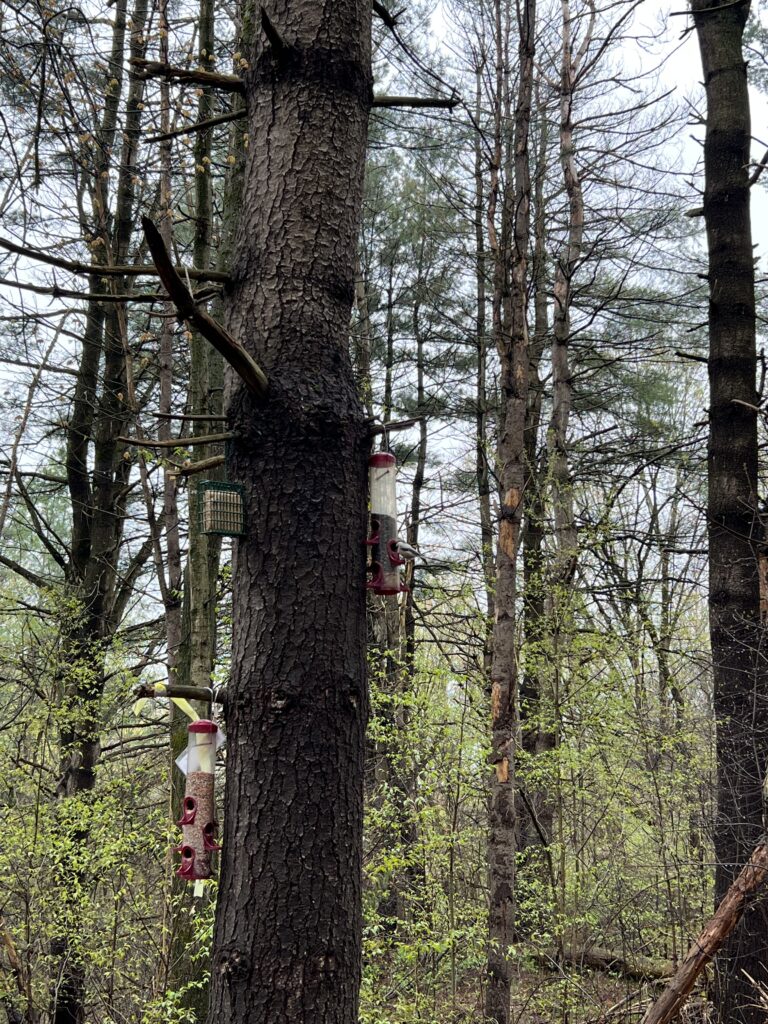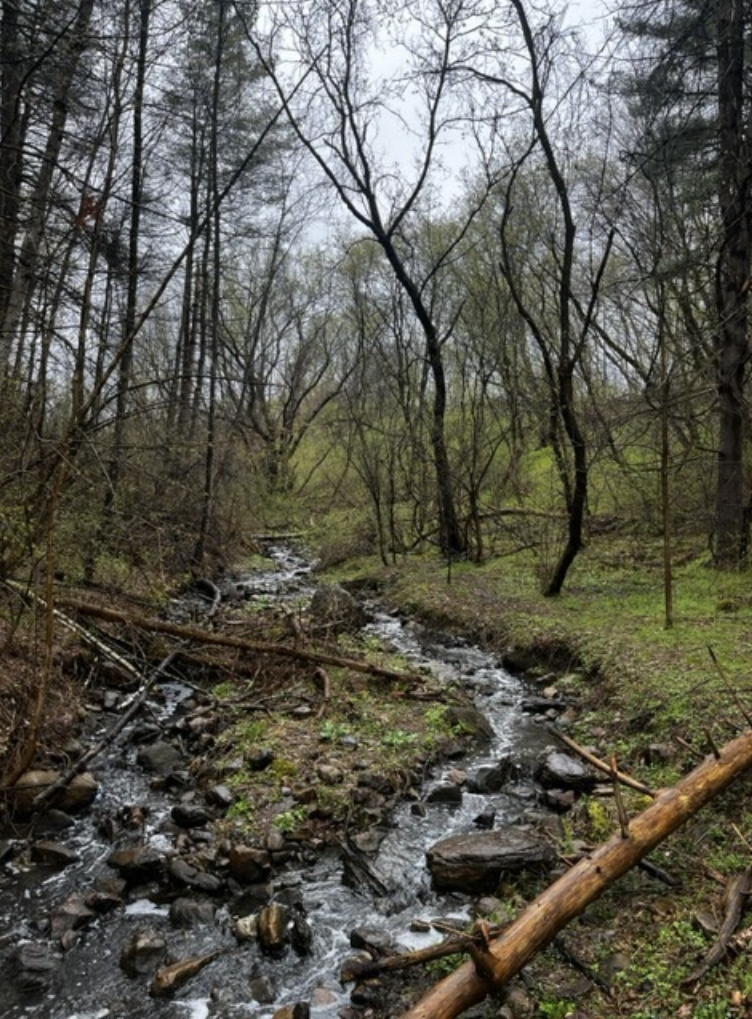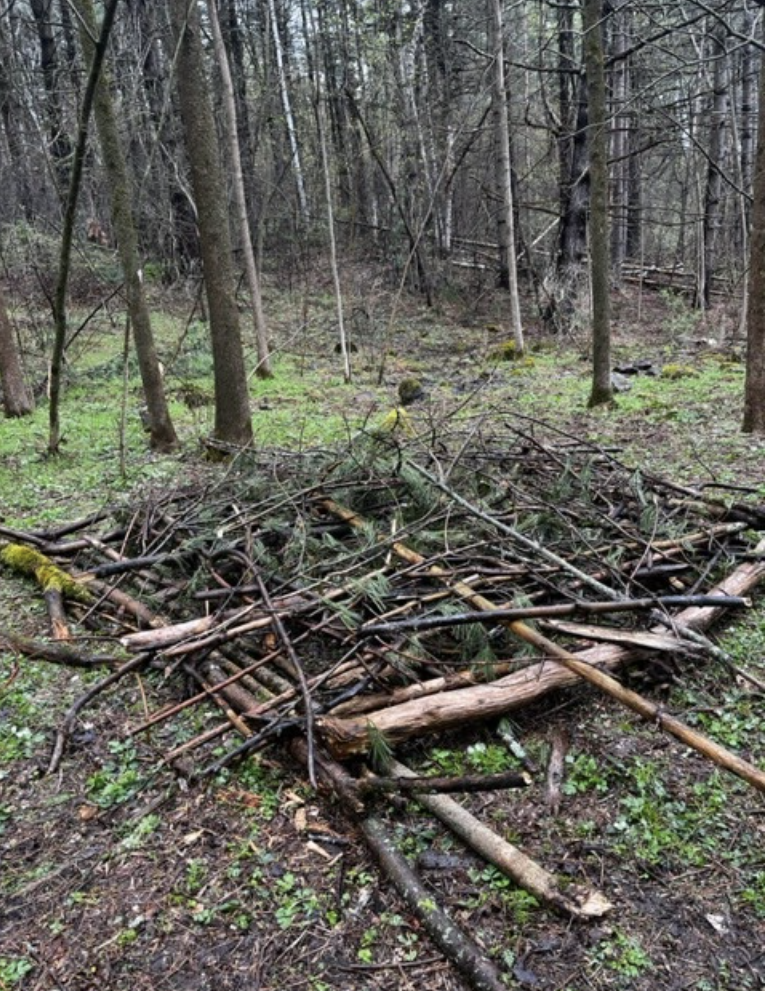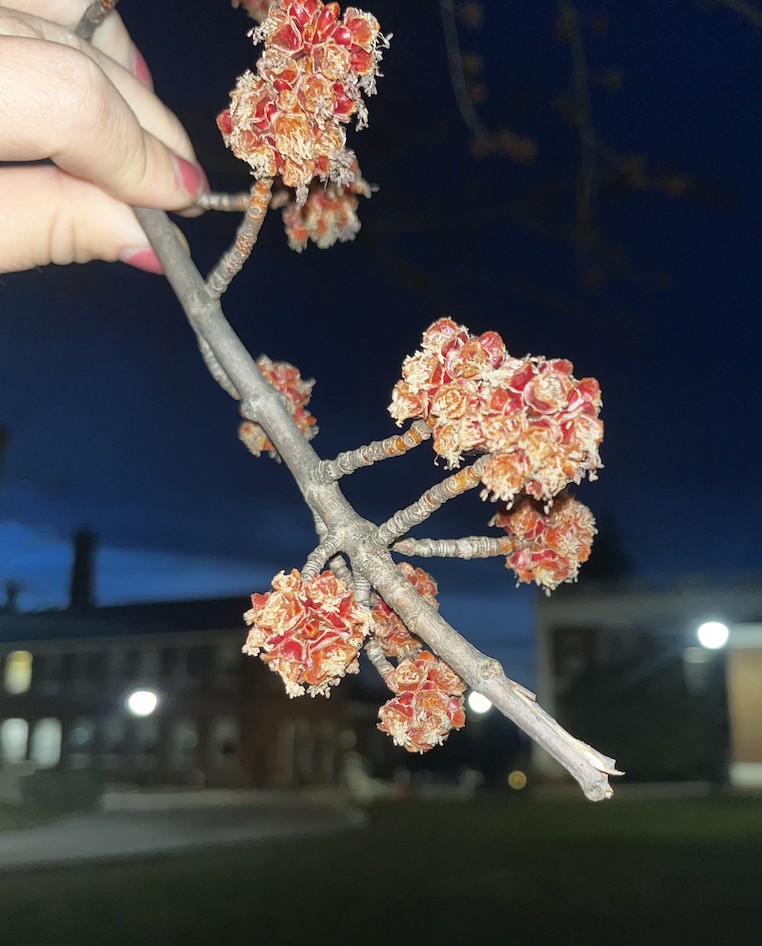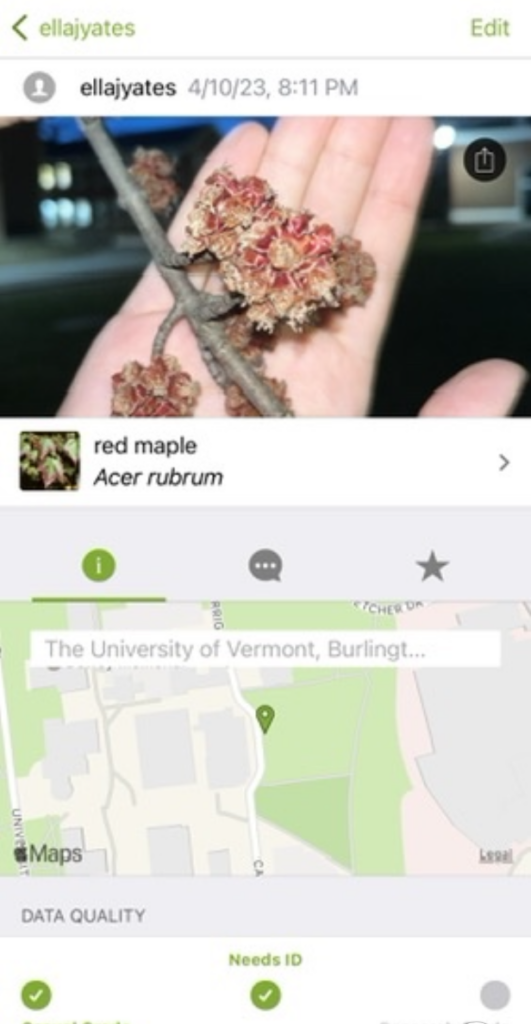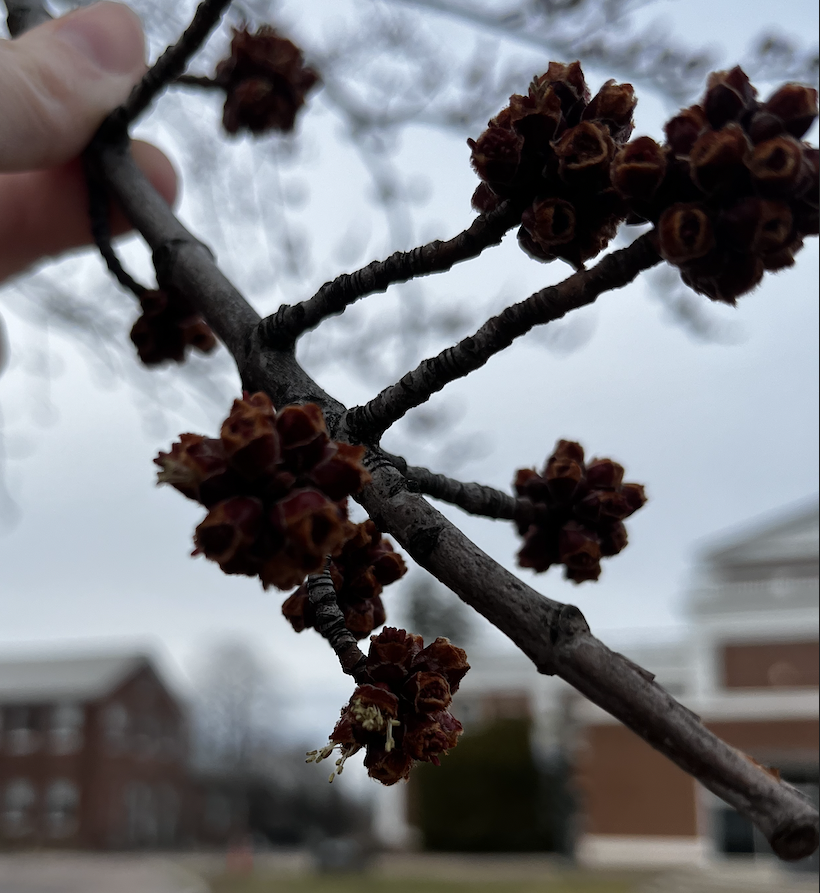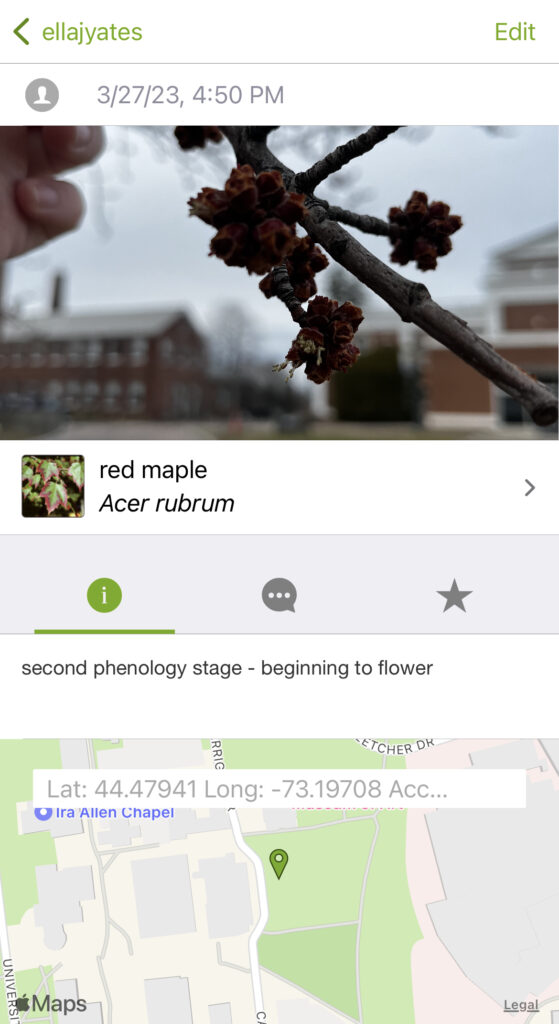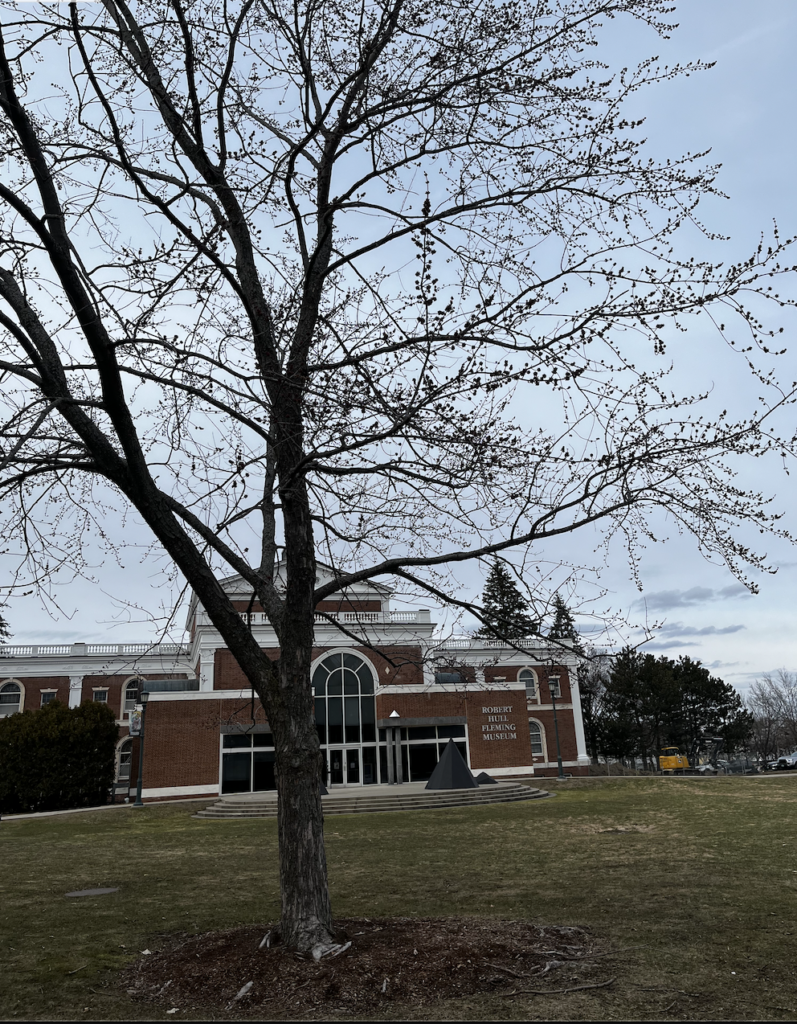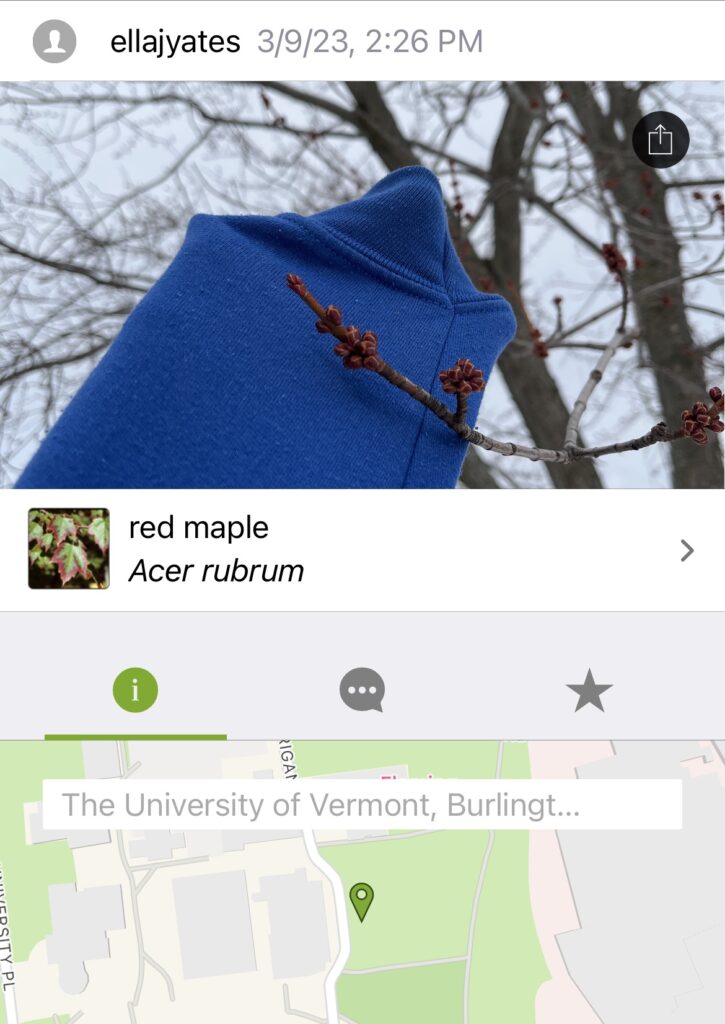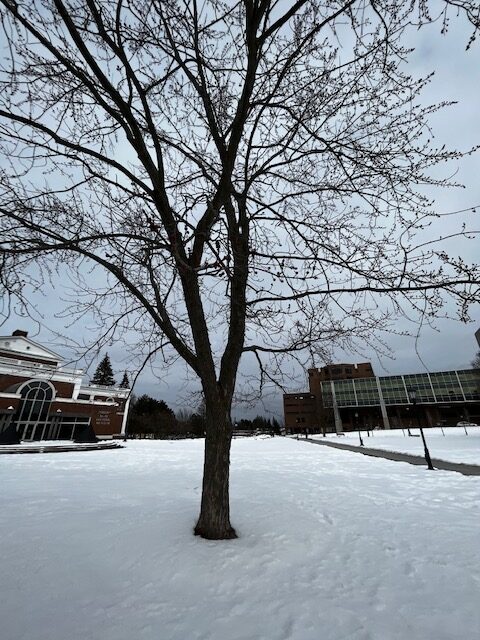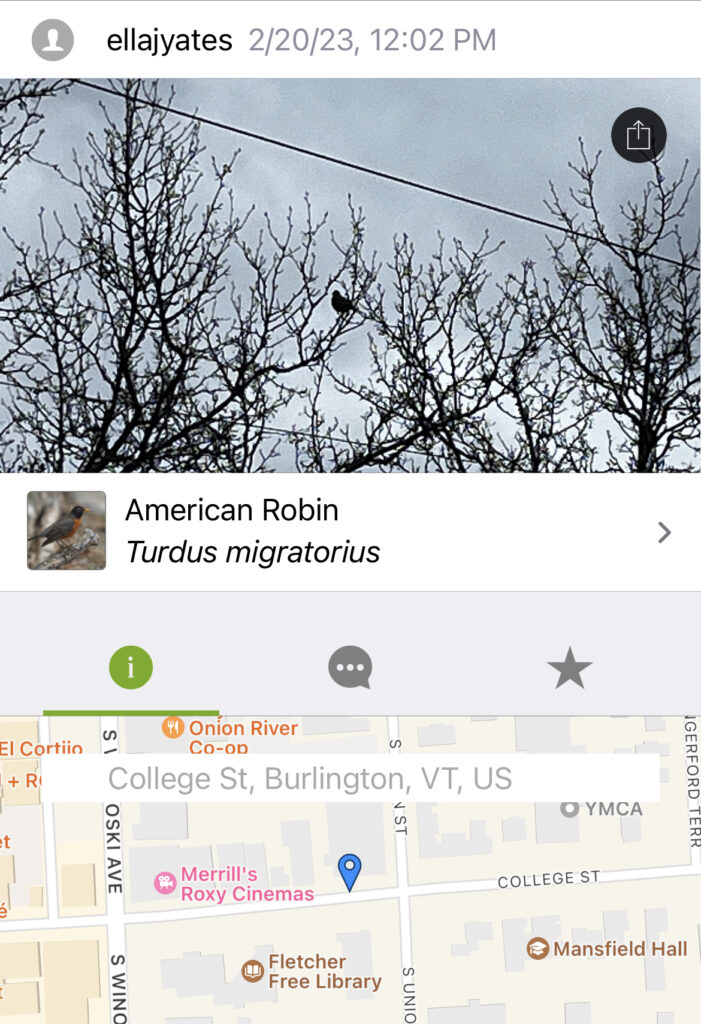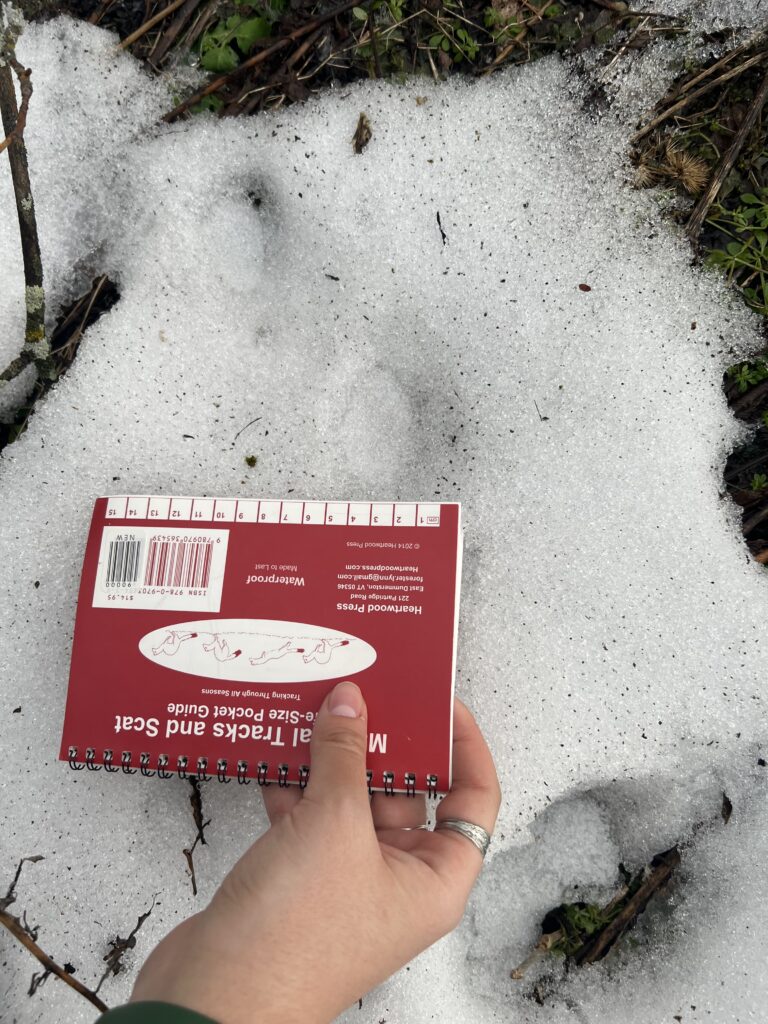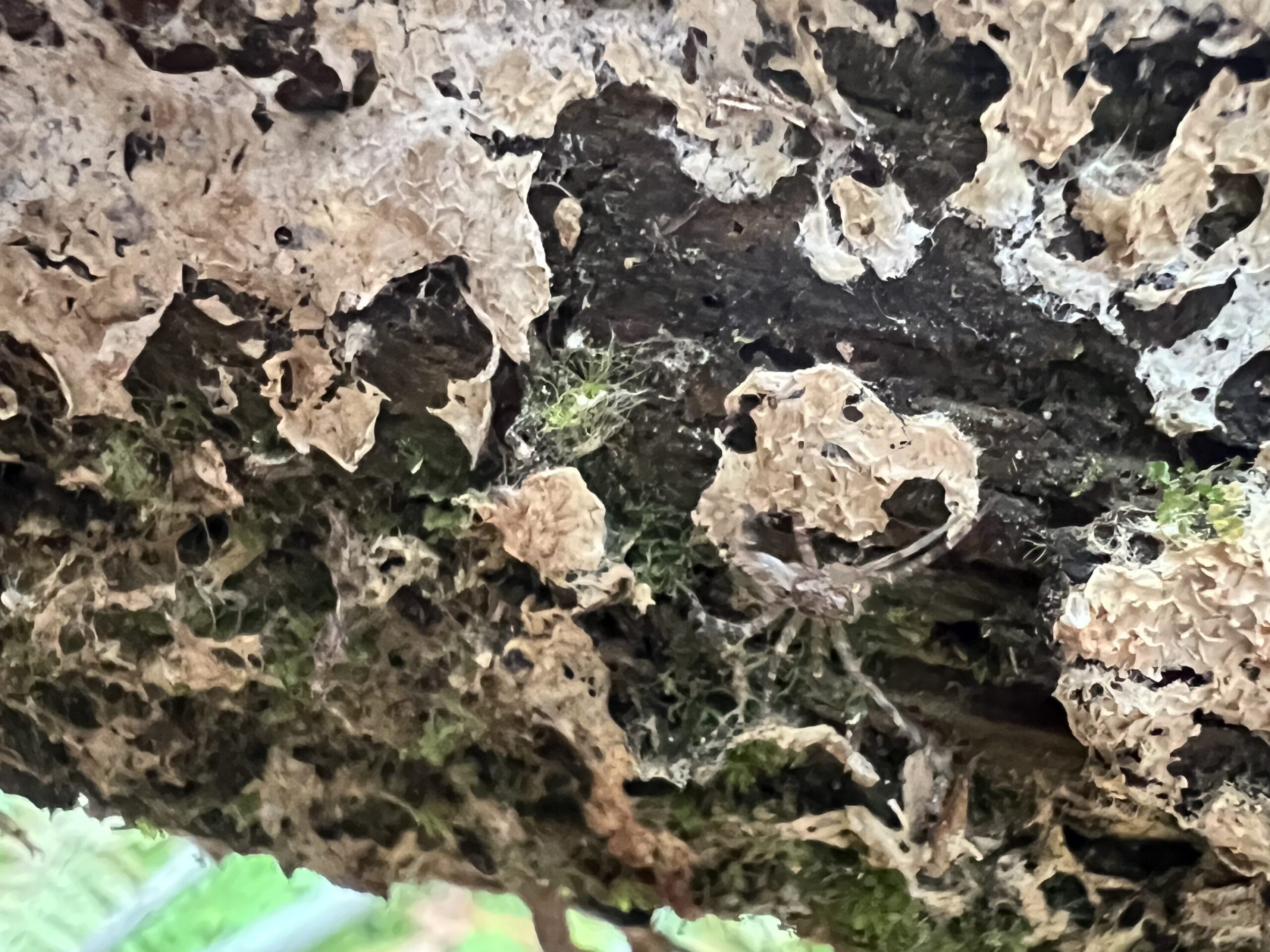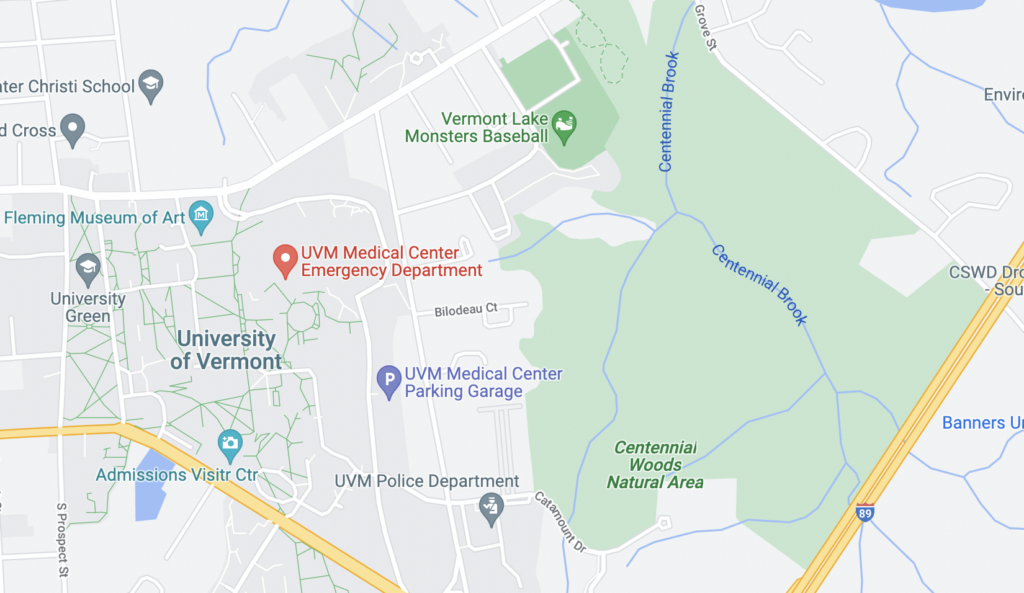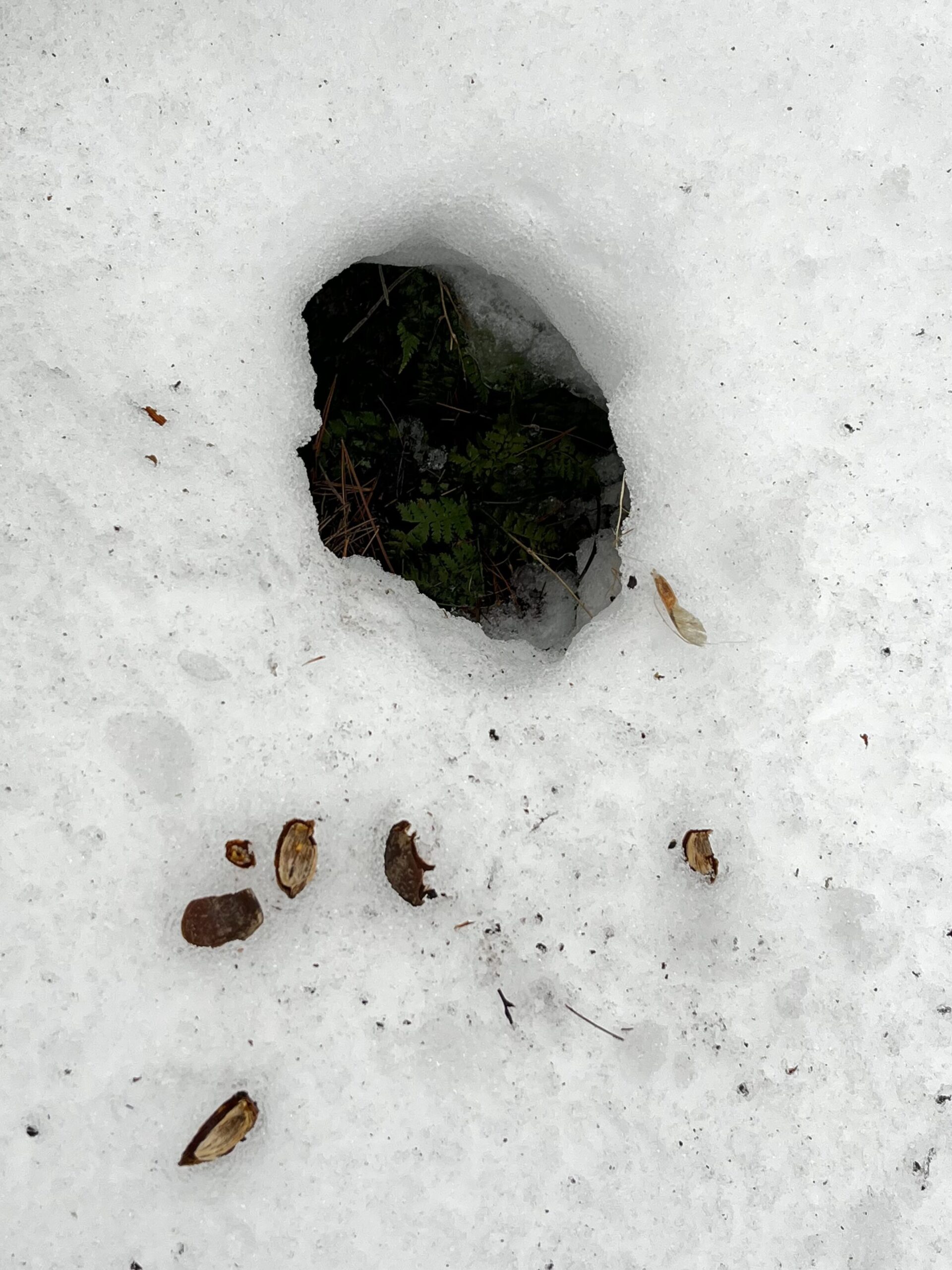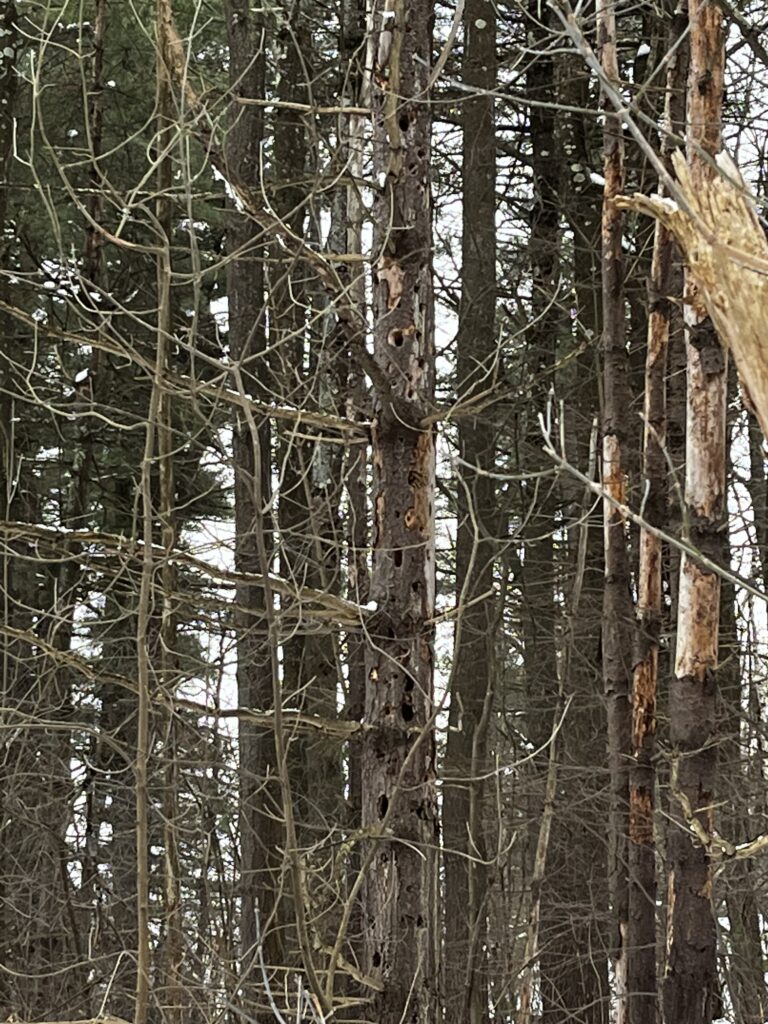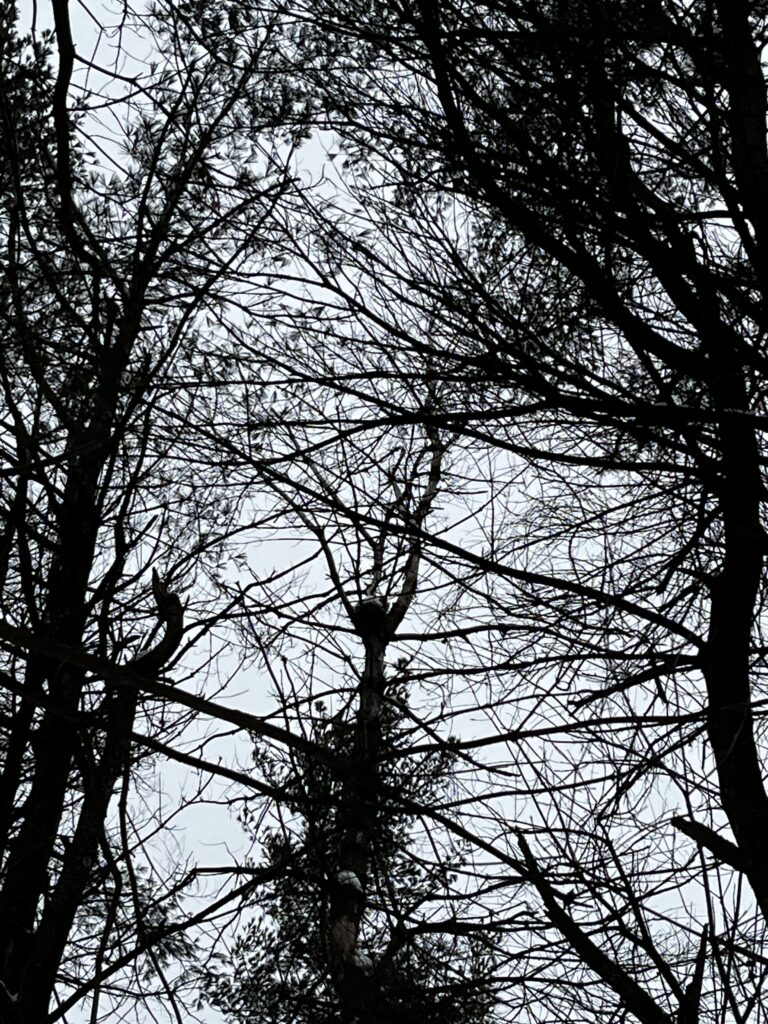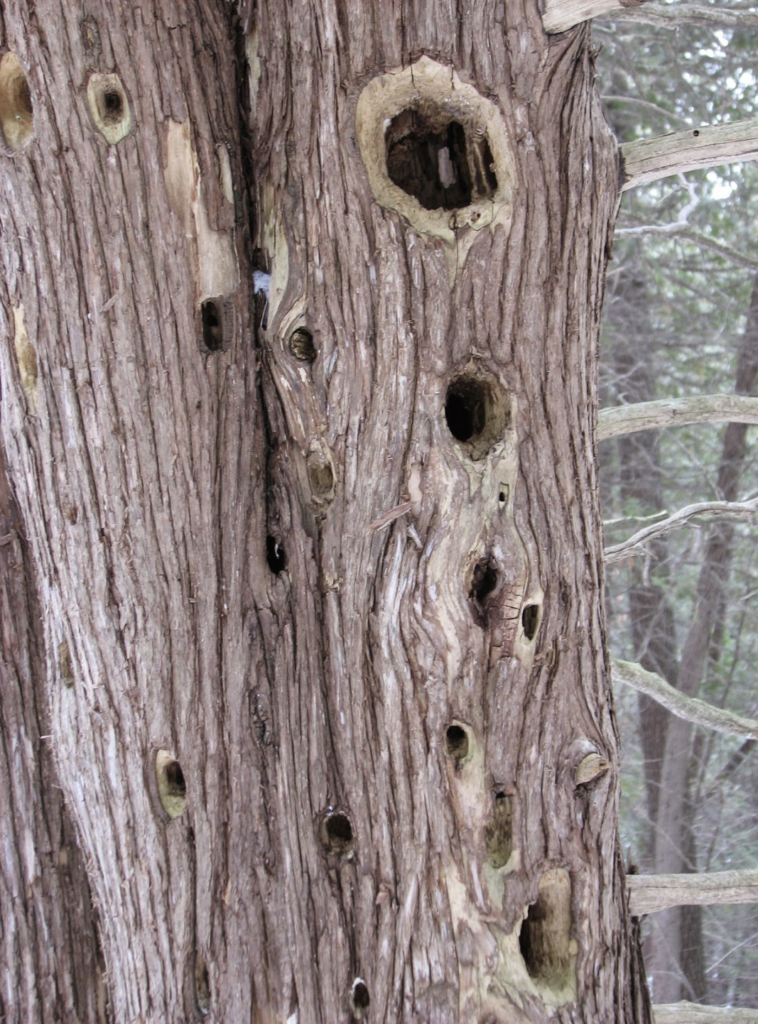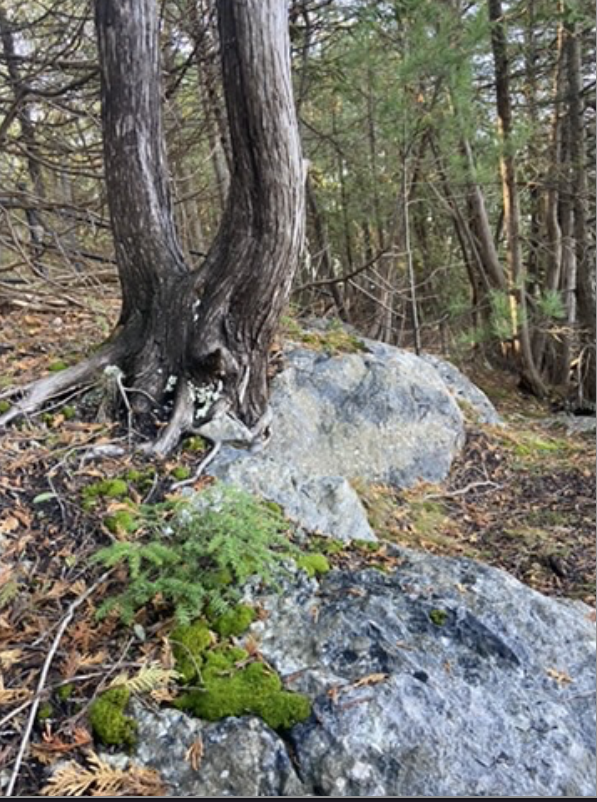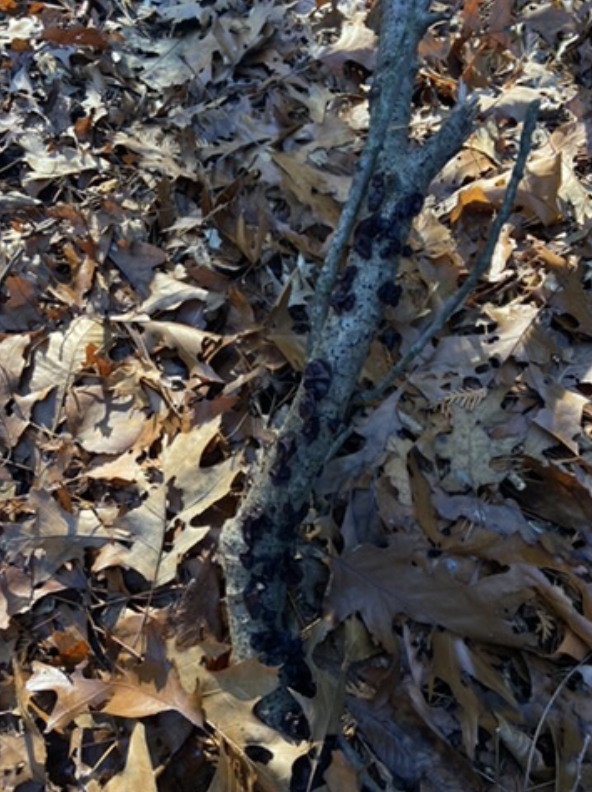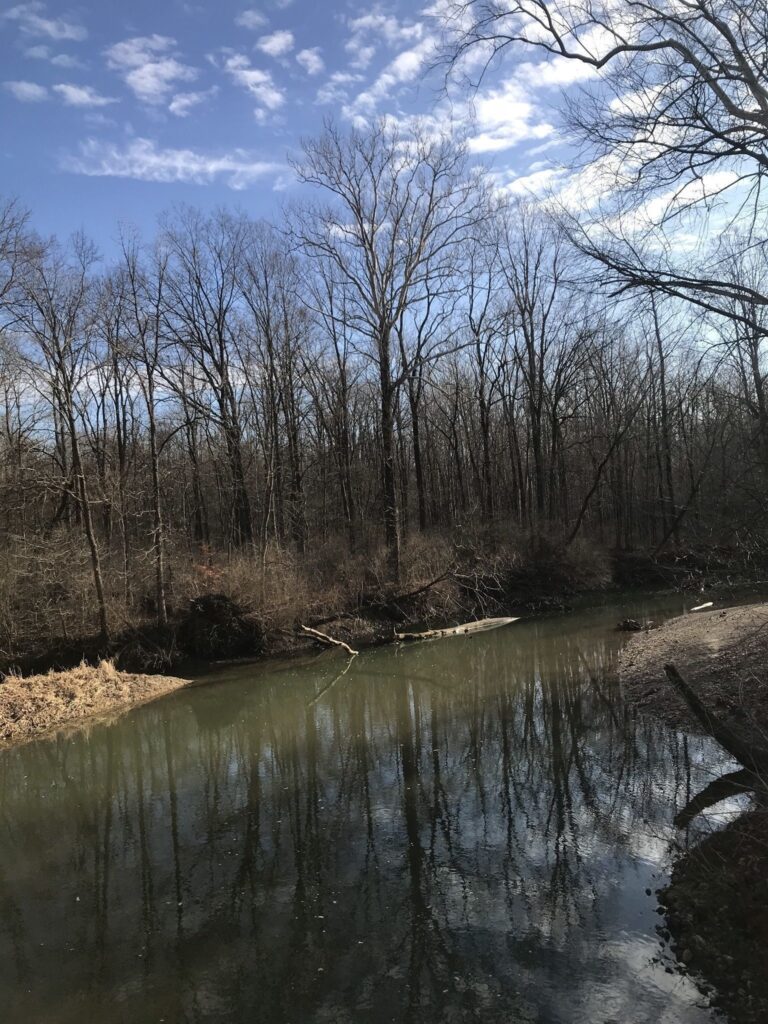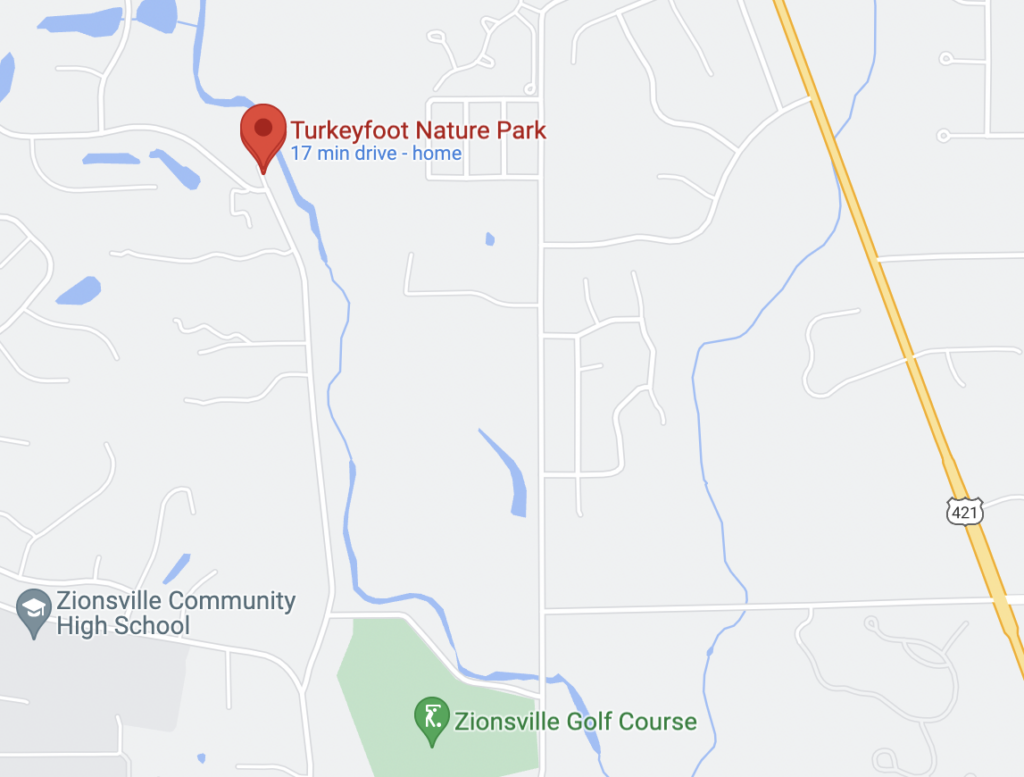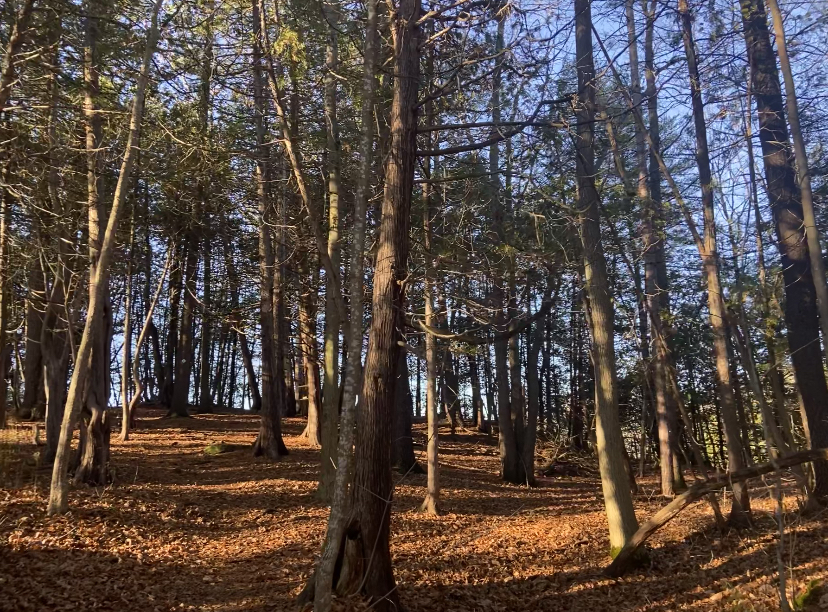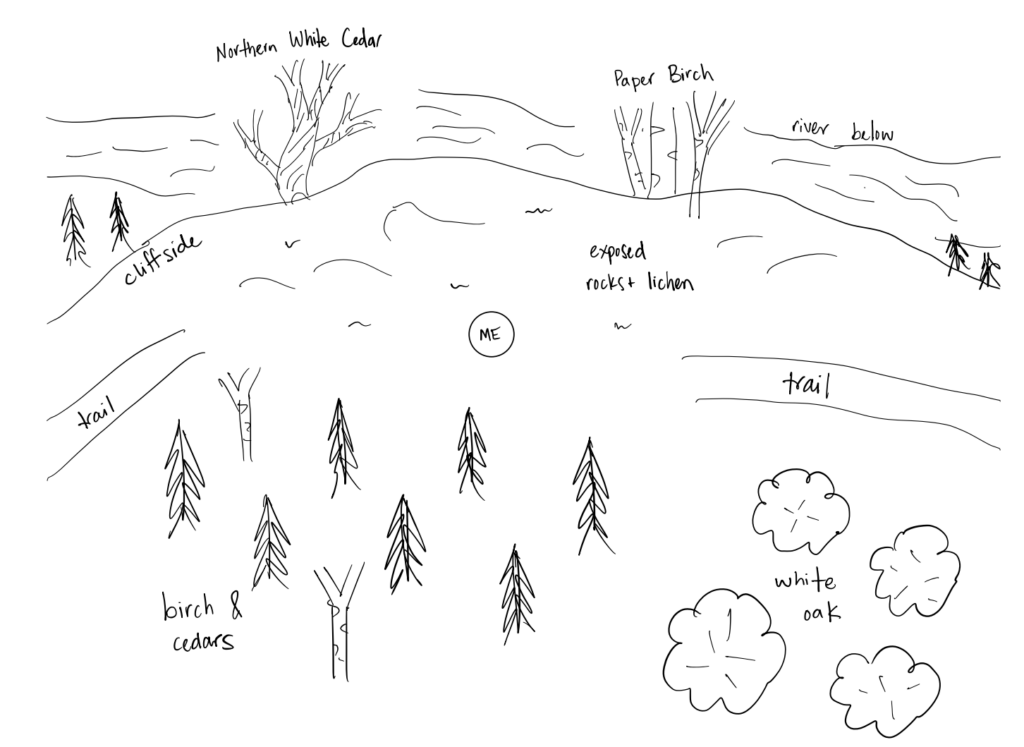NOW it’s my last blog post and last visit to Centennial Woods. For the City Nature Challenge, I logged an Eastern Grey Squirrel that I saw on campus and then went to Centennial with my friend Annie to find more species. We saw a Water Glider, a Gray Garden Slug, and lots of fungus. That was the extent of my BioBlitz but I appreciated that the iNaturalist app automatically included my posts after I joined my lab section’s group.
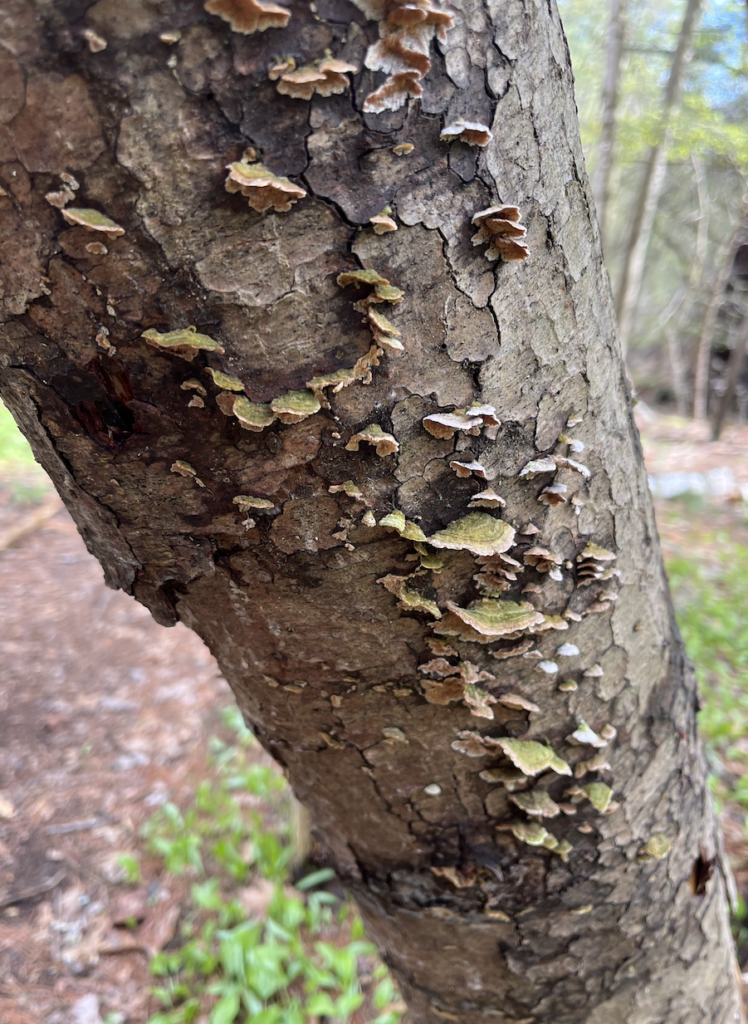
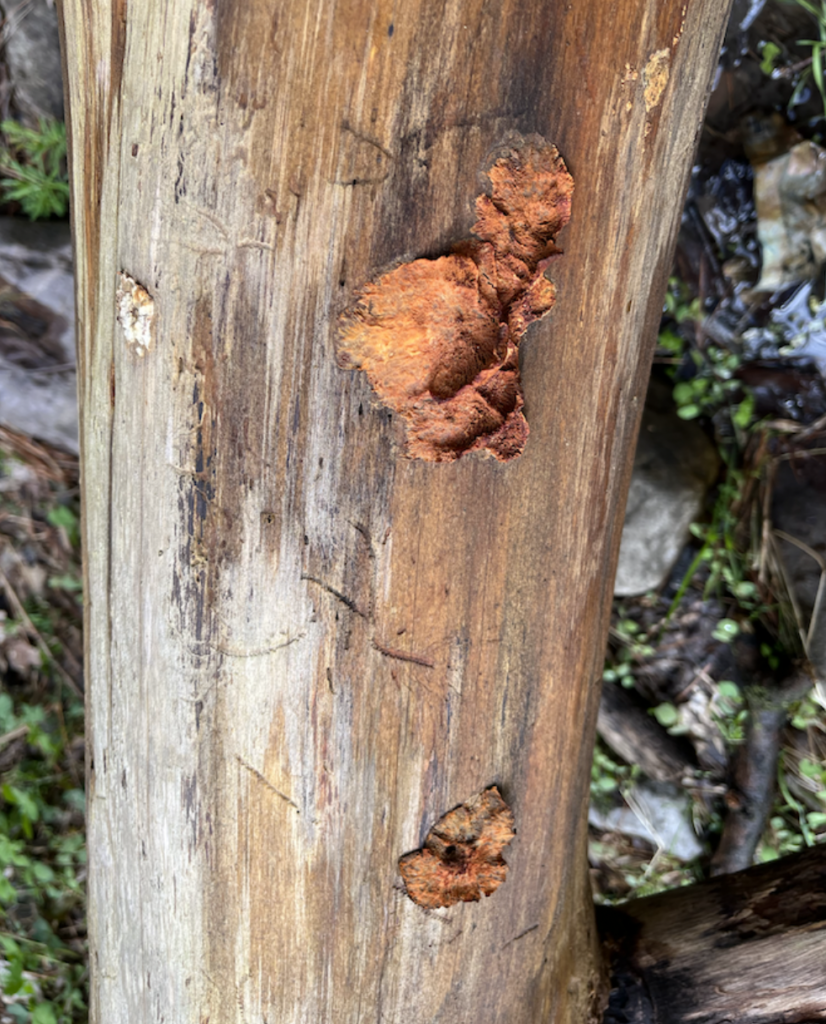
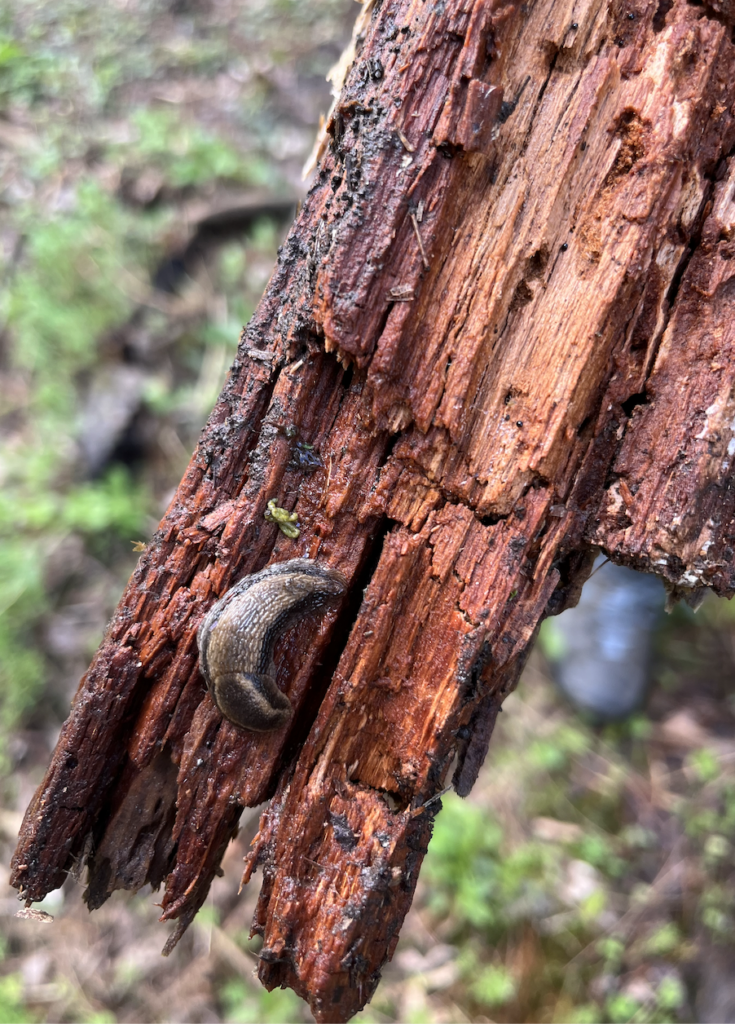
It’s pretty cool that Burlington was 78th out of 600 cities/locations around the world since we’re such a small urban area. Our NR groups contributed more than half of the city’s total observations which is impressive but means that the rest of the community should get engaged. Some of the cities were incredibly diverse which surprised me because I often think of cities as having no wildlife activity but Hong Kong had over 500 species logged I think. I’m excited to see how much this event grows in the future!
